Throwback 2022: When Mother Nature cried and burned
In 2022, climate change and its effects were felt like never before. Scorching heatwaves, leading to disastrous wildfires to floods burying everything in a watery grave – the world saw it all and yet persevered. This year truly served as a wake-up call — it’s now or never to save Planet Earth
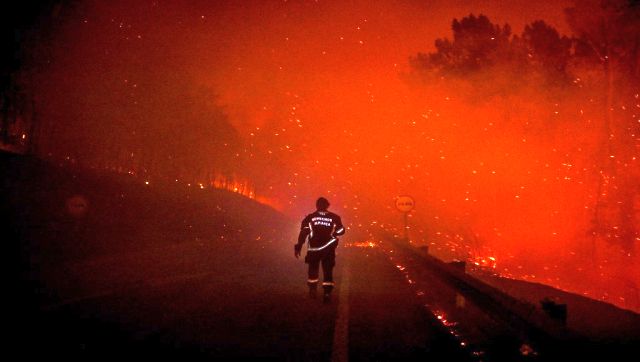)
A firefighter walks on the road with a flash light during a wildfire in Manteigas, central Portugal, on 10 August. Around the world, fires burned nearly 23 million acres, showcasing how serious a problem it has become. In Portugal alone, some 92,000 hectares of land have already burned this year, according to government estimates, with heatwaves and drought producing tinder-like conditions. AFP
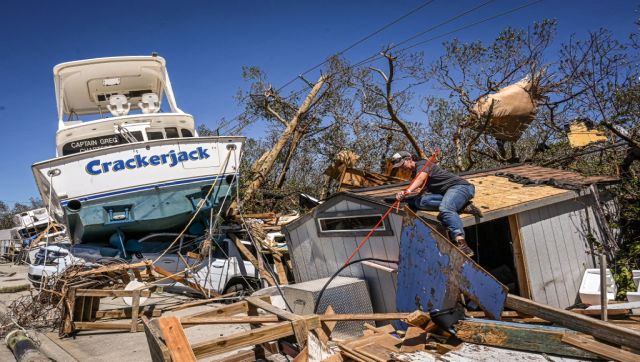)
People clear debris in the aftermath of Hurricane Ian in Fort Myers Beach, Florida on 30 September. Hurricane Ian was a large and destructive Category 4 Atlantic hurricane that was the deadliest hurricane to strike the state of Florida since the 1935 Labor Day hurricane. Ian caused widespread damage across western Cuba and the southeast United States, especially the states of Florida and South Carolina. AFP
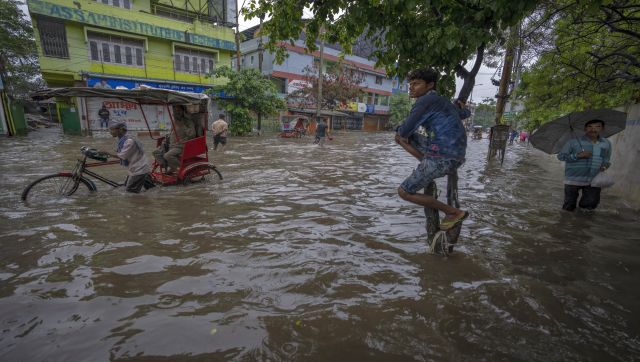)
People wade through a flooded road after heavy rains in Assam’s Guwahati. The eastern state of India witnessed three massive floods affecting thousands and thousands of people. AP
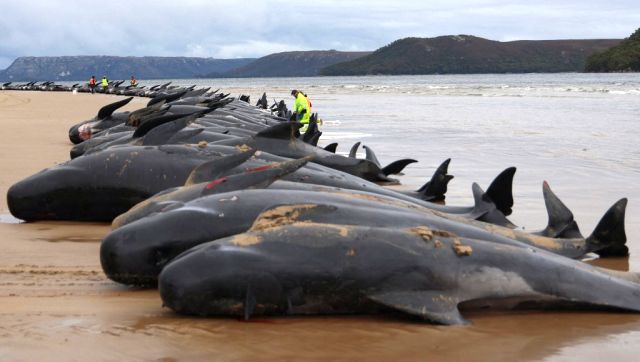)
Tasmania state wildlife services personnel check the carcasses of pilot whales, numbering nearly 200, after they were found beached on Macquarie Heads on the west coast of Tasmania, on 23 September. Almost 200 whales perished at an exposed, surf-swept beach on the rugged west coast of Tasmania, where Australian rescuers were only able to save a few dozen survivors. AFP
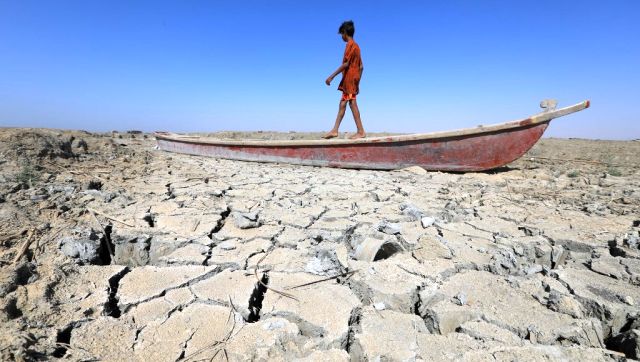)
A boy walks on a boat left lying on the dried-up bed of a section of Iraq’s receding southern marshes of Chibayish in Dhi Qar province, on 28 June. Iraq’s drought reflects a decline in the level of waterways due to the lack of rain and lower flows from upstream neighbouring countries Iran and Turkey. AFP
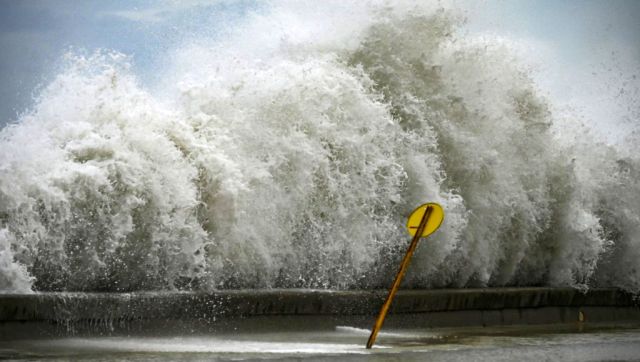)
Waves hit the Malecon in Havana, on 28 September, after the passage of hurricane Ian. Cuba exceeded 12 hours in total blackout with “zero electricity generation” due to failures in the links of the national electrical system after the passage of powerful Hurricane Ian. AFP
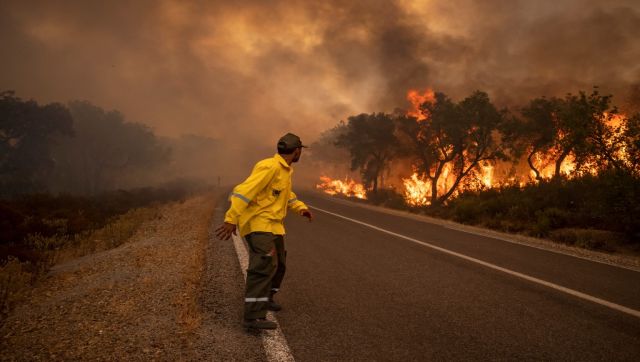)
A forest ranger looks on as a wild forest fire rages near the Moroccan city of Ksar el-Kebir in the Larache region on 15 July. AFP
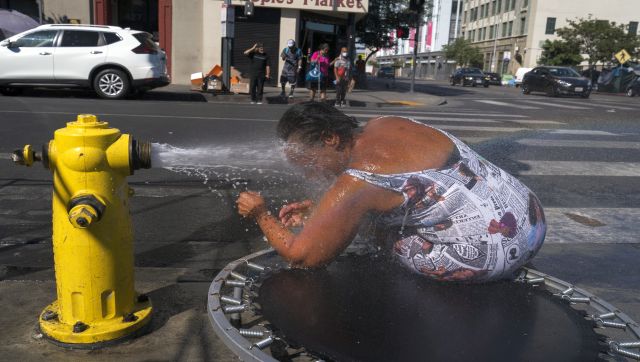)
Stephanie Williams, 60, cools off with water from a hydrant in the Skid Row area of Los Angeles on 31 August when the US was experiencing a heat wave. The mercury kept rising, making living conditions difficult. AP
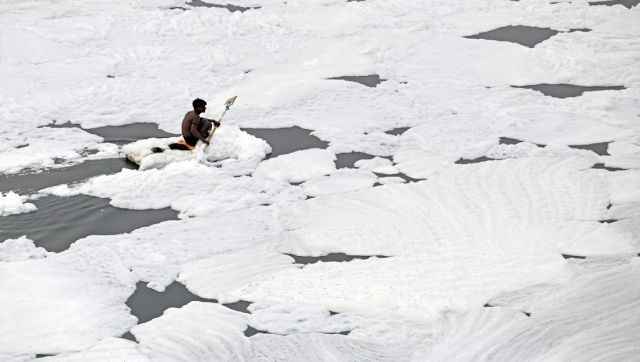)
A man paddles his raft while collecting recyclable materials in the waters of river Yamuna coated with polluted foam in New Delhi. AFP
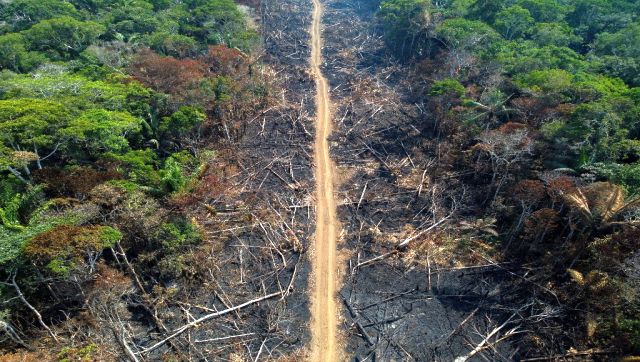)
A deforested and burnt area is seen on a stretch of the BR-230 (Transamazonian highway) in Humaitá, Amazonas State, Brazil, on 16 September. According to the National Institute for Space Research (INPE), hotspots in the Amazon region saw a record increase in the first half of September, being the average for the month 1,400 fires per day. AFP
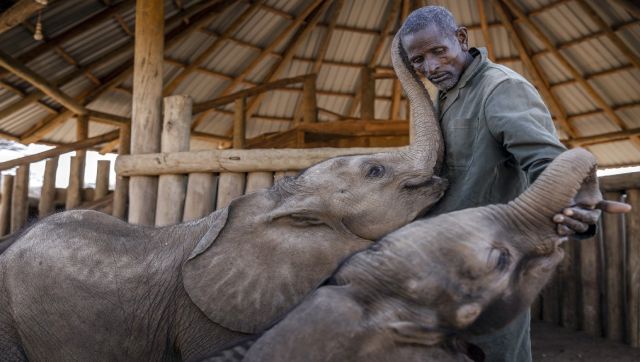)
Elephant keeper Kiapi Lakupanai plays with two calves at Reteti Elephant Sanctuary in Namunyak Wildlife Conservancy, Samburu, Kenya. Reteti Elephant Sanctuary has been overwhelmed with rescue operations and the influx of orphaned and abandoned calves due to the drought in Namunyak Wildlife Conservancy where they operate. Parched lands and dry wells cover the terrain leading to many baby elephants to lose their exhausted mothers, or get abandoned or lost. East Africa’s worst drought in 40 years is starving Kenya’s famed wildlife of usual food and water sources while increasing human-wildlife conflict. The severe drought has not only put millions of people on the brink of starvation, but it is also threatening the rich biodiversity in the region. AFP
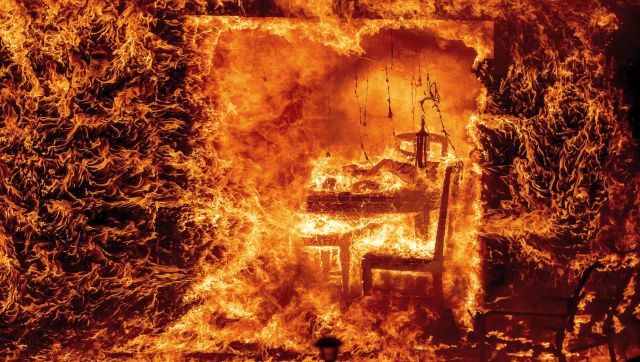)
Flames engulf a chair inside a burning home as the Oak Fire rages in Mariposa County, California., on 23 July. The Oak Fire was a destructive wildfire and burned 19,244 acres before being fully contained on 10 August. AP
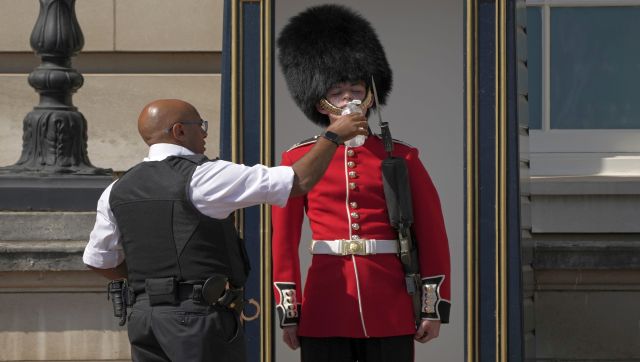)
A police officer gives water to a British soldier wearing a traditional bearskin hat on guard duty outside Buckingham Palace, during a heat wave in London, on 18 July. AP
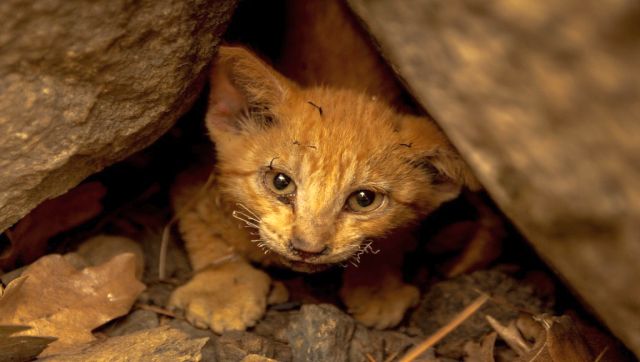)
A kitten singed whiskers that survived the McKinney Fire hides in rocks in the Klamath National Forest northwest of Yreka, California. The largest fire in California this year forced thousands of people to evacuate as it destroyed homes and ripped through the state’s dry terrain, whipped up by strong winds and lightning storms. AFP
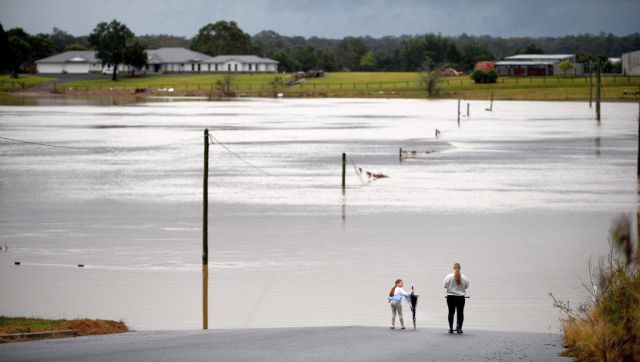)
Residents look out at floowwaters next to the overflowing Hawkesbury River in the northwestern Sydney suburb of Pitt Town on 6 July. Thousands of Australians were ordered to evacuate their homes in Sydney as torrential rain battered the country’s largest city and floodwaters inundated its outskirts. AFP
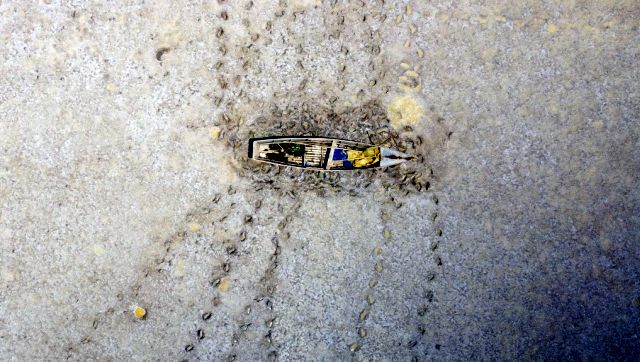)
An aerial view of an abandoned boat on a desert at the site of former Lake Poopo, near Punaca Tinta Maria, Bolivia on 15 October. Lake Poopo, once Bolivia’s second-largest, has largely disappeared, taking with it a centuries-old culture reliant entirely on its bounty. AFP
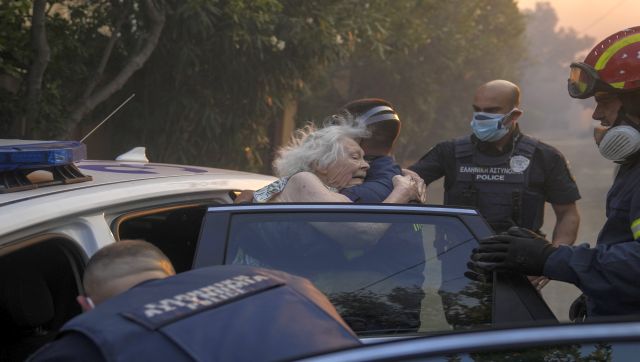)
Firefighters and police evacuate an elderly woman from her house amid wildfires in Penteli, Greece, on 19 July. AP
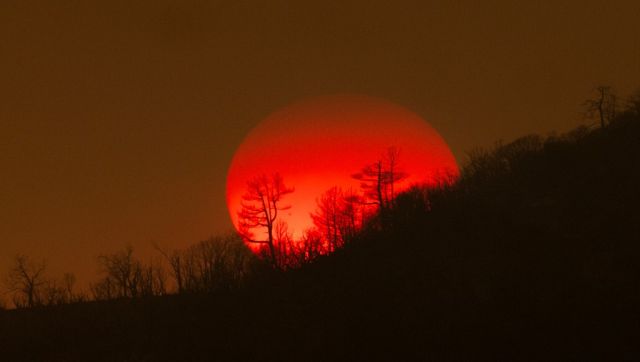)
The sun sinks behind a smoky sky and burned forest at the Oak Fire on near Mariposa, California, on 24 July. The fierce California wildfire burnt several thousand acres and forced evacuations, as tens of millions of Americans sweltered through scorching heat. AFP
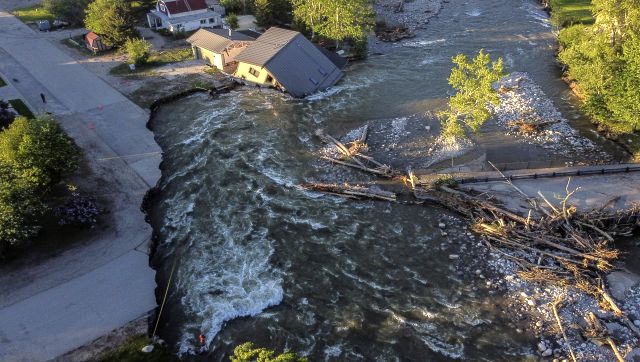)
A house sits in Rock Creek after floods washed away a road and a bridge in Red Lodge, Montana. AP
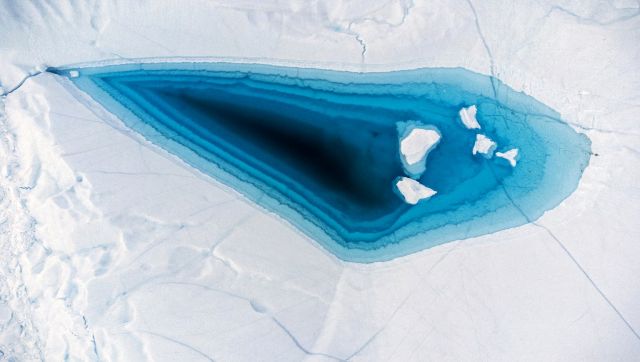)
Turquoise water is seen in a large melt hole on the top of an iceberg in the Disko bay, Ilulissat, western Greenland. In the past 40 years, the Arctic has warmed nearly four times faster than the rest of the planet, according to a recent scientific study. The icebergs are getting smaller, the glacier is retreating. Thawing permafrost is also threatening the stability of some buildings and infrastructure. AFP


)
)
)
)
)
)
)
)



